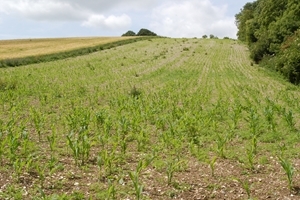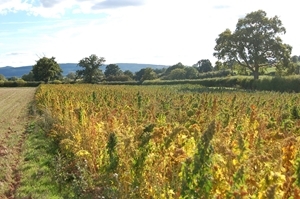 Every year I see the quality of game cover and wild bird seed crops range from absolutely brilliant to really rather dismal!
Every year I see the quality of game cover and wild bird seed crops range from absolutely brilliant to really rather dismal!
So what makes one grower achieve good results on a constant basis and others fail? Well, in a nutshell, it’s not luck or magic and usually it’s not a fluke either – it is quite simply down to planning and attention to detail. So, why don’t we ALL grow crops that we can be jolly proud of!
This is how you go about it: Planning what, where, when and how you are going to sow is key. These are
some of the questions you need to be asking.
1. Choose a crop or mixture that is suitable for the soil type – all the main seed suppliers will inform you what individual plant species prefer. Is the mix for holding game, feeding wild birds or both? Does it need to last to the very end of the shooting season? If included
in a stewardship scheme – does it comply?
2. Where is it to be planted? If the last crop was one that fell into the “dismal” category, can you identify what went wrong and correct it? If weed problems have been an issue, could the plot be moved to a cleaner site or a “sprayable” mix be planted in its place? Could the size/shape of the plot be changed or made bigger? Have you taken a soil sample lately to see if the area is lacking in anything?
 3. When do you reckon on sowing this crop? I feel that many folk strive to plant wild bird seed mixes in particular, far too early, before the soil has had a sensible chance to warm up. The second half of May and
3. When do you reckon on sowing this crop? I feel that many folk strive to plant wild bird seed mixes in particular, far too early, before the soil has had a sensible chance to warm up. The second half of May and
the first half of June tends to produce the best crops on a regular basis.
4. How are you going to prepare the plot? To me this is the most important issue of all. Can you create a stale seedbed on the ground by allowing weeds to grow and then spraying or cultivating them out? Maybe do it more than once – if you are not sowing until June, you should have the time. Vitally, create a fine, clod free seed bed. Sow at the correct depth and add fertiliser – at least 60kg/ha of nitrogen, ideally more. Keep pests away, including spraying kale with a flea beetle product.
5. Check the plot regularly to see that all is OK. In the worst scenario, you may have to re-drill in July if all has failed. But that is not the end of the world – many a great cover/seed crop has been produced this late in the day – but take advice!
6. Enjoy the fruits of your hard work and what you have achieved! Whether these crops are holding pheasant or partridge or supplying farmland birds with a stack of food over-winter – you should be proud of what you have accomplished!
Get your FREE cover crop guide:
Download free >